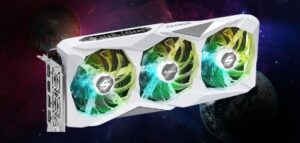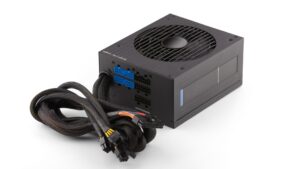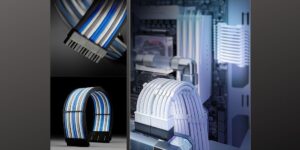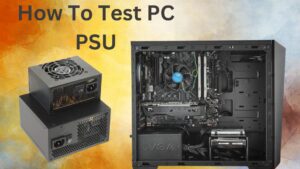Is Minecraft CPU or GPU Intensive?
Minecraft is one of the most popular and best-selling video games of all time. Since its initial release in 2009, it has captured the imaginations of people all over the world with its blocky, voxel-based graphics and focus on creativity, survival, and exploration. But as a game that involves randomly generated worlds, complex underground caverns, mobs of different creatures, and physics simulations, there is no question that Minecraft requires some significant computing power to run smoothly. But just which components of your computer does Minecraft stress the most or Is Minecraft CPU or GPU Intensive?
Let’s take a deeper look.
The Foundation of Minecraft Performance
Minecraft’s unique blend of blocky graphics, procedural generation, and dynamic environments requires a robust computing system. Unlike some modern games that heavily rely on powerful GPUs for rendering lifelike visuals, Minecraft leans more towards CPU utilization. The underlying reason lies in the game’s emphasis on simulation, world generation, and in-game calculations.
Minecraft’s performance is more dependent on the CPU than the GPU. The CPU handles various critical tasks, including AI processing, block updates, and managing the game’s intricate mechanics. As a result, the power of your CPU can significantly impact your computer’s performance, making it a crucial component for achieving smooth gameplay.
CPU’s Role in Minecraft
Minecraft’s gameplay involves constant interactions with the game world, from mining resources to dealing with dynamic weather changes. These actions demand real-time processing, and the CPU is at the forefront of handling these computations. Each block update, entity movement, and environmental change relies on the CPU’s ability to execute instructions quickly and efficiently.
Logical Increments, in their guide, highlight that a powerful CPU is essential for maintaining a high frame rate in Minecraft. The game’s reliance on single-threaded performance makes CPUs with strong individual core performance particularly advantageous.
GPU’s Contribution to Minecraft
While the CPU shoulders the primary burden, the GPU is not entirely sidelined in the realm of Minecraft. The GPU comes into play for rendering graphics, handling textures, and providing visual enhancements. Although Minecraft’s graphics are intentionally simplistic, a capable GPU can still enhance the visual experience, especially when utilizing shaders or high-resolution texture packs.
Logical Increments, draw a parallel between Fortnite and Minecraft in terms of GPU utilization. They note that similar to Fortnite, Minecraft’s GPU usage increases in moments of heavy graphics processing, such as during intense combat situations or when using graphical enhancements.
CPU vs GPU
To understand Is Minecraft CPU or GPU Intensive, we first need a brief refresher on the roles of a computer’s CPU and GPU. The CPU, or central processing unit, is the main processor in a computer that handles all the basic computations and logic of any program or game. It is responsible for things like player movement, crafting recipes, mob AI, etc. The GPU, or graphics processing unit, on the other hand, focuses exclusively on rendering graphics – tasks like drawing textures, lighting effects, particles, and animations on screen.
In many modern games, the workload is divided between these two components. The CPU handles things like gameplay logic, physics simulations, and world updates, while the GPU manages all the actual graphics drawing and visual effects. But some games stress one component far more than the other. For example, strategy games tend to be more CPU intensive, involving lots of simulations and computations behind the scenes. First-person shooter games with intensive lighting and particle effects lean more on the GPU.
So where does Minecraft fall on this CPU vs GPU spectrum? Let’s break it down.
Minecraft is Predominantly CPU Intensive
Overall, Minecraft places the bulk of its demands on a computer’s CPU rather than its GPU. There are a few key reasons for this:
- World Generation – When a new world is created in Minecraft, the CPU has to generate the entirety of the terrain, cave systems, structures, etc, from scratch in real time as the player explores. This random terrain generation requires lots of procedural generation logic and calculations.
- Redstone & Machines – Complex redstone contraptions and machines in Minecraft rely heavily on processor-intensive tasks like circuit logic, timing mechanisms, and physics simulations behind the scenes.
- Mobs & Entity AI – Dozens or even hundreds of mobs, animals, NPCs, etc walking around each with their own behaviors and pathfinding algorithms mean the CPU has to juggle a lot of independent processes at once.
- Crafting & Inventory Management – Managing inventories, crafting tables, searching for crafting recipes, and crafting items all put the workload on the CPU.
- Mod Support – Popular CPU mods like those adding new mobs, machines, or game modes ramp up computational demands even further.
In comparison, the graphical workload of Minecraft is relatively light. The chunky, low-poly voxel graphics don’t push modern GPUs very hard. Lighting, shadows, weather effects, and other eye candy seen in graphically intensive games are minimal or nonexistent in Minecraft’s pixelated aesthetic. Even with hardware-accelerated rendering, chunk meshing, and other GPU optimizations in newer versions, the workload stays skewed towards the CPU side of things.
System Requirements Over Time
As a result of its CPU-focused design, Minecraft’s official minimum and recommended system requirements have gotten more demanding over the years as the game and its complexity have grown. Some key milestones:
- Early Java Editions – Could run smoothly on computers over a decade old, with only 1-2GB RAM and dual-core CPUs recommended.
- Redstone Update – Redstone circuits and new mob behaviors upped CPU workload, requiring faster dual-core CPUs and 2-4GB RAM.
- 1.7 Update – Multi-core processor support, world height increase, and new mobs meant quad-core CPUs became recommended.
- 1.13 Update – Overhaul of world generation, chunk loading, and bigger memory caches led to 6GB RAM minimum on Windows.
- Bedrock Edition – Hardware accelerated rendering brought parity with Java Edition on low-end phones and tablets but higher specs for desktops.
- 1.18 Update – The latest caves & cliffs overhaul made quad-core CPUs, 8GB RAM minimum, and discrete GPUs recommended for smooth performance.
As you can see, even though Minecraft’s graphics are simple, the under-the-hood world simulation, AI logic, redstone circuits, and other computational complexities have steadily grown over the years to stress multi-core CPUs more and more.
CPU or GPU – What Matters Most for Minecraft?
In summary, while a capable GPU is important for texture quality and framerates, when it comes to running Minecraft smoothly the single most important system component is having a fast multi-core CPU. Factors like core count, clock speeds, and overall processor performance make a bigger difference in this game than pure graphics card capabilities.
Of course, balanced specs across the board are ideal – 6GB RAM minimum, quad-core CPU or better, and a dedicated entry-level GPU on the desktop. But if budget constraints force a choice, investing more in CPU upgrades before the GPU will yield better results for playing Minecraft, modded or vanilla. Lightweight graphics also mean this classic game can run surprisingly well even on lower-end integrated graphics solutions.
Conclusion: Striking the Right Balance
In conclusion, the question of whether Minecraft is CPU or GPU-intensive leads us to a nuanced understanding. Minecraft’s reliance on the CPU for handling intricate game mechanics, simulations, and real-time calculations is evident. However, a capable GPU does contribute to enhancing the visual aspects of the game.
For players seeking an optimal Minecraft experience, a well-balanced system with a powerful CPU and a decent GPU is the key. Understanding the specific demands of modded Minecraft and the impact on both CPU and GPU allows gamers to tailor their hardware choices accordingly.
As Minecraft continues to evolve with updates and the creative contributions of its community, staying informed about the game’s performance dynamics ensures an enjoyable and immersive gaming experience. Whether you’re exploring vast landscapes, constructing elaborate structures, or engaging in intense combat, striking the right balance between CPU and GPU capabilities ensures that your Minecraft journey is as smooth as possible.
FAQs
Q. Why is Minecraft more CPU intensive than GPU?
Ans. It stresses the CPU more for tasks like world generation, mob AI, and redstone circuits which are processor-heavy rather than graphics.
Q. What does GPU do in Minecraft?
Ans. The GPU handles real-time rendering of chunky voxel graphics like drawing textures, lighting effects, and animations on screen.
Q. How many cores does Minecraft use?
Ans. Minecraft is designed to take advantage of multi-core CPUs, utilizing 4+ cores to split the load of generating worlds and simulation many mobs/entities.
Q. How much RAM does Minecraft need?
Ans. The minimum system requirements have grown over updates to keep pace, currently, 6GB RAM is recommended for a smooth vanilla experience on desktop computers.
Q. Does integrated graphics work for Minecraft?
Ans. Lower-end integrated graphics solutions can still run Minecraft acceptably well since its not extremely demanding of system resources for 3D rendering like newer AAA games.
Last Updated on 29 January 2024 by Haleema

Haleema is an experienced PC builder who has been building PCs for the last couple of years. He has written several articles on PC components, including power supplies and graphics cards. In his articles, he explains how to check the compatibility of a power supply with a GPU and what things to consider when pairing them.







